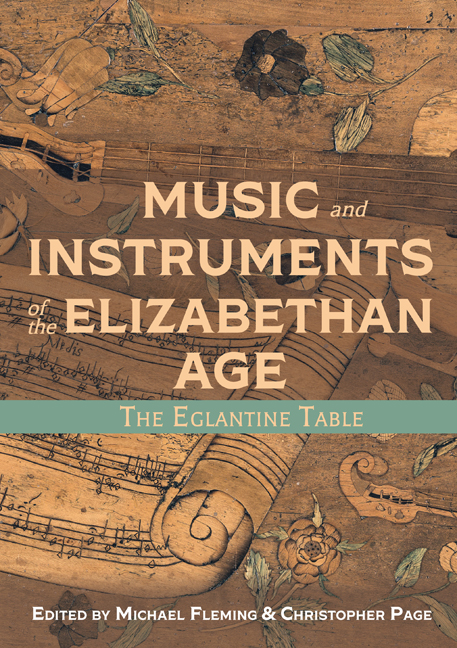Book contents
- Frontmatter
- Dedication
- Contents
- List of Illustrations
- Foreword
- Acknowledgements
- Note to the Reader
- List of Abbreviations
- Introducing the Eglantine Table
- Part I Silent Things
- Part II Music and Instruments
- Part III Broader Views of the Eglantine Table
- Appendices
- Glossary
- Bibliography
- List of Contributors
- Index
- Plate section
4 - The Writing Implements
Published online by Cambridge University Press: 24 March 2021
- Frontmatter
- Dedication
- Contents
- List of Illustrations
- Foreword
- Acknowledgements
- Note to the Reader
- List of Abbreviations
- Introducing the Eglantine Table
- Part I Silent Things
- Part II Music and Instruments
- Part III Broader Views of the Eglantine Table
- Appendices
- Glossary
- Bibliography
- List of Contributors
- Index
- Plate section
Summary
In our age of disposable pens and plentiful paper, writing by hand is an unremarkable and often unglamorous activity, even if the rise of digital technology has started to give it a certain retro chic. In the sixteenth century, the business of setting words on paper was by no means straightforward. Typically, before one could begin, quills needed to be cut or sharpened, ink had to be hand-made, and paper required smoothing or sizing to render it receptive to the ink. Writing came with its own distinctive paraphernalia, including sloping desks, candles with snuffers and wick-trimmers, bookrests, inkstands and pounce-pots (which held pounce or pin-dust to dry the ink). Despite this profusion of materials and the physical labour that might be needed to manipulate them, reading and writing were viewed as enfranchising activities which exercised the higher mental faculties and created plentiful opportunities for the ostentatious display of civility. The study became a privileged space in the home, to be decked out with appropriate finery, with bespoke cabinets and inkstands in the form of classical statuary. Across Europe, artists produced images of scholars and saints that lovingly documented their material surroundings, as if striving to connect their beautiful writing materials with the glories of their works and of their lives. This context provides a frame for our understanding of the two pen-cases that appear on the Eglantine Table now at Hardwick Hall (Plate 2).
Pen-cases – known in the period as ‘penners’ – were small (typically between 15 and 20 cm in length) and compact devices for holding quills and other implements of writing, and were attached with strings to a portable inkwell with a stopper. The examples depicted on the Eglantine Table appear on frieze C in an area otherwise devoted to music and to games, including cards, dicing, chess and backgammon. The cases are sharply differentiated in their depiction. The one between the violin and the chessboard is shown with both penner and inkwell closed up, and lies horizontally, as if resting on the surface of the Table (Figure 4.1, top; Plates 5, 15). Its rectilinearity is emphasised by horizontal lines, suggestive of grooves or ridges in the surface of the case, which is relieved by the flowing contours of the heart-shaped inkwell and of the strings that connect to it.
- Type
- Chapter
- Information
- Music and Instruments of the Elizabethan AgeThe Eglantine Table, pp. 57 - 66Publisher: Boydell & BrewerPrint publication year: 2021

